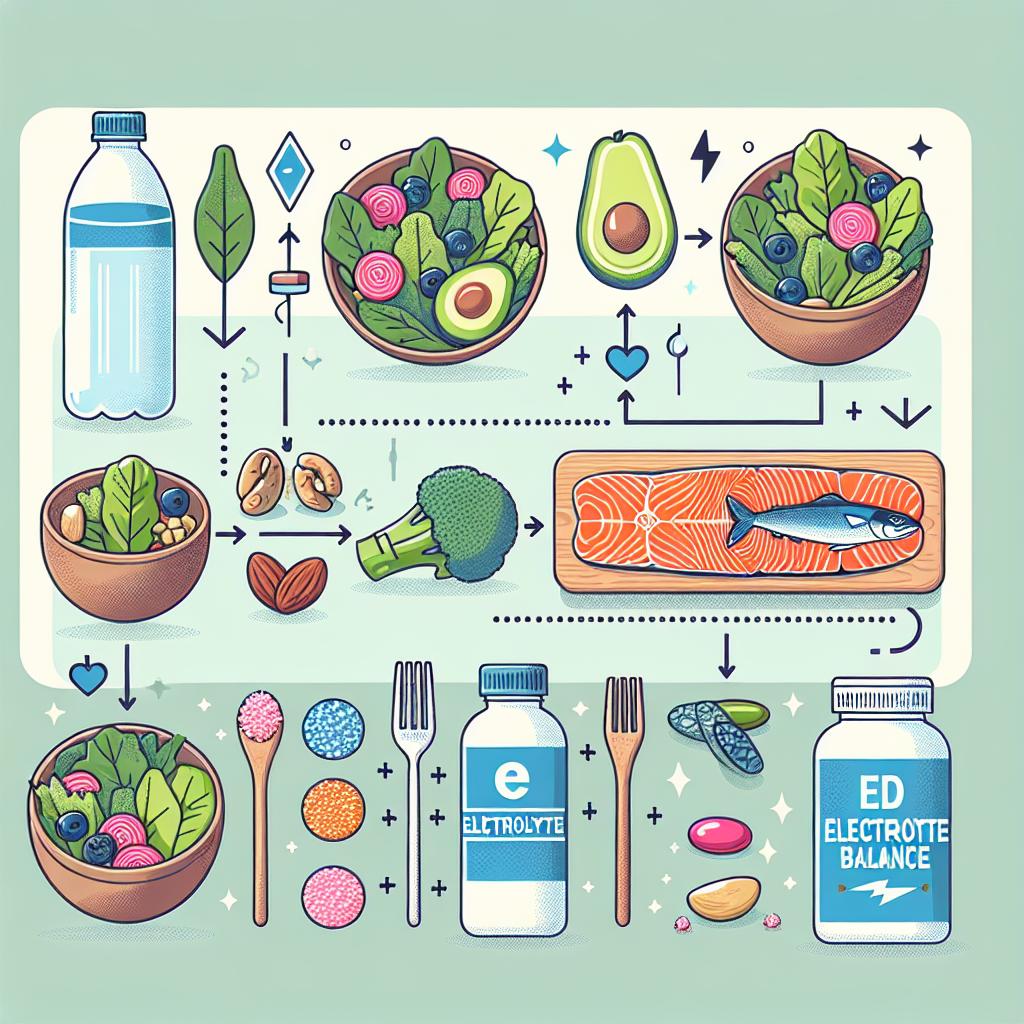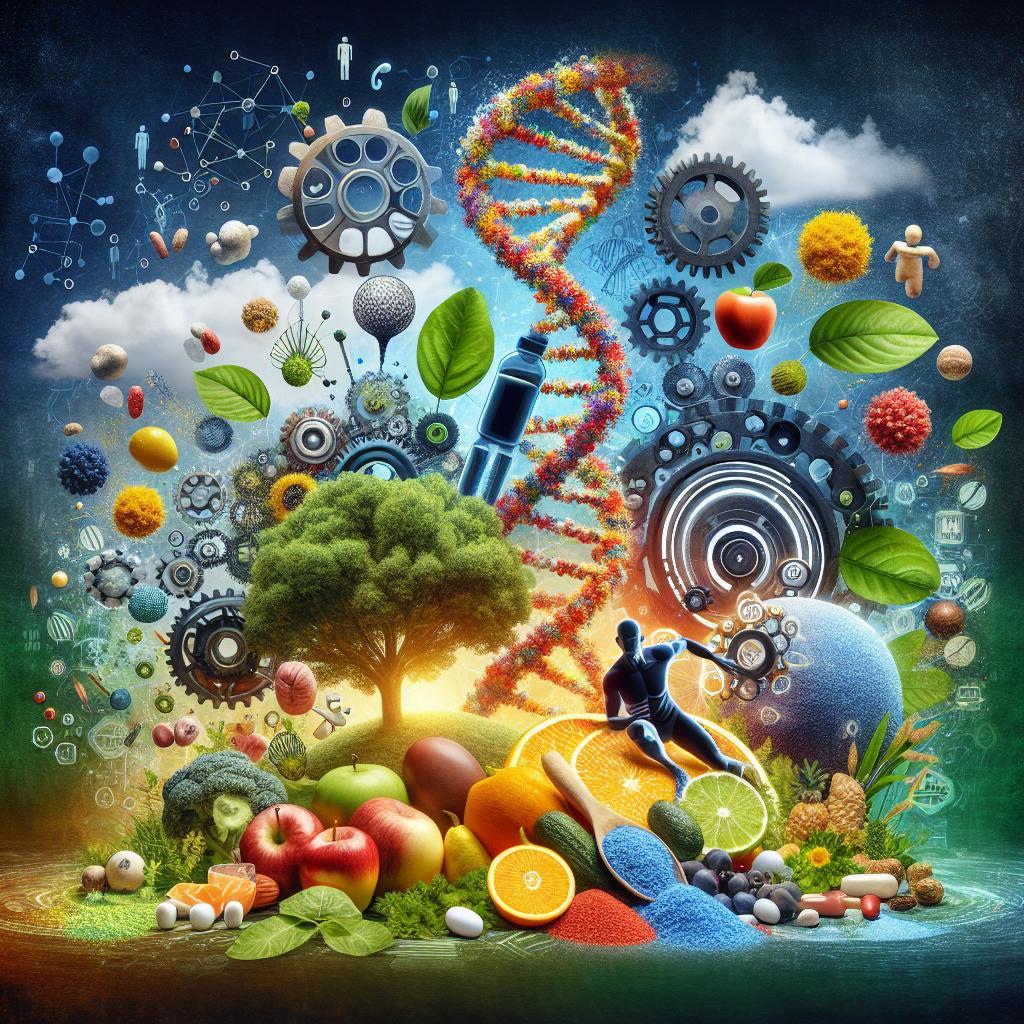This post may contain affiliate links which means I may receive a commission for purchases made through links. Learn more on my Private Policy page.
How to Maintain Electrolyte Balance on Keto
Embarking on a ketogenic journey can feel like setting sail on uncharted waters—the promise of weight loss and vibrant energy ahead, but also the risk of feeling adrift in the sea of dietary changes. One of the most crucial navigational tools you’ll need on this voyage is a solid grasp of electrolytes. These tiny yet mighty minerals, like sodium, potassium, and magnesium, play a pivotal role in keeping our bodies balanced and functioning smoothly, especially when you’re steering clear of carbs. But fear not! In this friendly guide, we’ll explore easy and enjoyable ways to maintain your electrolyte balance while on the keto diet. So grab your life jacket (and maybe a snack or two) as we dive into the colorful world of keto-friendly electrolytes, ensuring that you not only thrive on your low-carb adventure but do so with the energy and vitality to enjoy every moment of the ride!
Understanding Electrolytes and Their Role in Keto Success
Electrolytes are essential minerals in the body that carry an electric charge and play a crucial role in maintaining hydration, nerve function, and muscle performance. On a keto diet, the body undergoes significant changes due to reduced carbohydrate intake, which can lead to an imbalance of these vital nutrients. When you switch to a low-carb lifestyle, the body tends to lose water weight, causing electrolytes to be flushed out rapidly. This can result in what is commonly referred to as the ”keto flu,” characterized by fatigue, headaches, and muscle cramps. To counteract these effects, it’s important to ensure an adequate intake of electrolytes, particularly sodium, potassium, and magnesium, which support overall wellness while following the ketogenic diet.
Here are some key sources to help maintain electrolyte balance:
- Sodium: Incorporate a sprinkle of sea salt or an electrolyte powder that contains sodium to enhance hydration.
- Potassium: Reach for avocados, spinach, and mushrooms, which are excellent low-carb sources.
- Magnesium: Nuts, seeds, and dark chocolate are delicious ways to increase your magnesium levels.
To visualize your daily electrolyte needs, you may find the following table informative:
| Electrolyte | Recommended Daily Amount | Rich Food Sources |
|---|---|---|
| Sodium | 2,300 mg | Sea salt, broth |
| Potassium | 4,700 mg | Avocado, spinach |
| Magnesium | 400-420 mg | Nuts, dark chocolate |

Recognizing Signs of Electrolyte Imbalance on a Low-Carb Diet
Maintaining electrolyte balance while on a low-carb diet is crucial for overall well-being. When greatly reducing carbohydrate intake, the body may experience decreased electrolyte levels due to factors such as increased urination and changes in fluid retention. It’s essential to be vigilant and watch for certain signs that indicate an imbalance. Common symptoms to look out for include:
- Fatigue: A sudden drop in energy levels can be a clear indicator.
- Cramps: Muscle cramps or spasms, particularly in the legs, may signal low potassium or magnesium.
- Dizziness: Feeling lightheaded or faint could hint at dehydration or insufficient sodium.
- Headaches: Frequent headaches can also be a consequence of imbalanced electrolytes.
Other physical signs include an irregular heartbeat, digestive issues, or feelings of irritability. Staying attentive to these symptoms can help you quickly adjust your intake of necessary minerals. To help keep your electrolytes in check, consider incorporating foods rich in magnesium, potassium, and sodium into your meal plan. Here’s a quick reference table for some top sources of these vital nutrients:
| Electrolyte | Food Sources |
|---|---|
| Magnesium | Spinach, Almonds, Avocado |
| Potassium | Avocado, Kale, Mushrooms |
| Sodium | Sea Salt, Broth, Pickles |

Essential Foods and Supplements to Keep Your Electrolytes in Check
Maintaining electrolyte balance is crucial, especially on a ketogenic diet, where the body undergoes significant shifts in fluid and mineral levels. To keep those electrolytes in check, incorporate essential foods that are naturally rich in sodium, potassium, and magnesium. Consider adding the following to your meals:
- Avocados – Packed with potassium, a fantastic addition to salads and smoothies.
- Leafy Greens – Spinach and kale are excellent sources of magnesium.
- Sea Salt – A simple way to boost your sodium intake can enhance flavor and help retain water.
- Coconut Water – A natural hydrator that contains both potassium and magnesium.
In addition to these foods, consider supplementation to fill any gaps. Here are some key supplements that can help maintain proper electrolyte levels:
| Supplement | Benefit |
|---|---|
| Magnesium Citrate | Supports muscle function and energy production. |
| Potassium Gluconate | Helps in maintaining fluid balance and reducing muscle cramps. |
| Sodium Bicarbonate | Aids in buffering lactic acid build-up during workouts. |
| Electrolyte Powders | Quick and convenient way to replenish essential minerals. |

Practical Tips for Staying Hydrated and Balanced on Your Keto Journey
Staying adequately hydrated while on a ketogenic diet is essential to maintain your energy levels and overall well-being. Begin by incorporating the following habits into your daily routine to ensure you meet your hydration needs:
- Drink plenty of water: Aim for at least 8-10 glasses of water a day. Consider carrying a reusable water bottle to remind you to sip throughout the day.
- Infuse your water: Add slices of lemon, cucumber, or mint to enhance the flavor without adding carbs.
- Track your intake: Use hydration apps or a simple journal to monitor your water consumption and make adjustments as needed.
As you lower your carb intake, you may also lose vital electrolytes such as sodium, potassium, and magnesium. Here are some strategies to help you replenish these essential minerals:
- Salt your food: Don’t shy away from adding salt to your meals. This can help maintain sodium levels, especially if you exercise frequently.
- Incorporate electrolyte-rich foods: Foods like avocados, leafy greens, and nuts are great sources of potassium and magnesium.
- Consider supplements: If necessary, opt for electrolyte supplements to ensure you’re meeting your daily requirements, particularly at the start of your keto journey.
| Electrolyte | Recommended Daily Intake | Rich Food Sources |
|---|---|---|
| Sodium | 1,500-2,300 mg | Sea salt, broth |
| Potassium | 2,500-3,000 mg | Avocado, spinach, mushrooms |
| Magnesium | 400-420 mg | Nuts, seeds, dark chocolate |
Q&A
Q&A: How to Maintain Electrolyte Balance on Keto
Q1: What are electrolytes, and why are they important on a keto diet?
A1: Great question! Electrolytes are minerals like sodium, potassium, magnesium, and calcium that play a crucial role in keeping our bodies functioning smoothly. They help with hydration, muscle contractions, and nerve signaling. When you switch to a keto diet, your body enters a state of ketosis where it flushes out excess water and electrolytes, making it essential to replenish these little superheroes!
Q2: What symptoms should I look out for if my electrolyte levels are off?
A2: Tune in to your body! If you’re feeling fatigued, dizzy, experiencing muscle cramps, or have headaches, it might be time to check your electrolytes. Keto flu, that pesky phase when transitioning into keto, is often a sign that your electrolytes need a boost. Don’t ignore the signs; listen to your body’s whispers before they turn into shouts!
Q3: How can I increase my sodium intake on a keto diet?
A3: Salt is your friend! You can sprinkle a little extra sea salt on your meals or sip on homemade broth (chicken, beef, or vegetable) for a warm, savory way to replenish sodium. Also, adding pickles or olives to your snacks can provide that tasty salty kick while aiding your electrolyte needs. Don’t shy away from flavor—embrace it!
Q4: What are the best sources of potassium on keto?
A4: Potassium loves to hang out in keto-friendly foods! Fill your plate with leafy greens like spinach and kale, avocados, and low-carb veggies like broccoli and brussels sprouts. Nuts and seeds, especially pumpkin seeds and almonds, are also fantastic options. It’s all about keeping it colorful and crunchy!
Q5: Can magnesium be easily found in common foods on a keto diet?
A5: Absolutely! Magnesium can be your go-to fatigue fighter. Think dark chocolate (yes, please!), nuts (especially cashews and almonds), avocados, and leafy greens like Swiss chard. If you’re feeling fancy, a magnesium supplement could also help, but always consult your healthcare provider before diving into the supplement world.
Q6: How can I keep track of my electrolyte intake?
A6: Consider keeping a food diary or using a tracking app! Jot down what you eat and tally up the electrolytes as you go. Not a fan of pen and paper? There are plenty of apps that can help you log your meals and show the nutritional breakdown. Plus, it can be fun to become your own “keto scientist” experimenting with how different foods affect your levels!
Q7: Any fun tips or tricks for electrolyte maintenance?
A7: Why, yes! Get creative with your hydration: add a pinch of salt, lemon juice, and a splash of coconut water for a refreshing drink that’s loaded with potassium! Herbal teas, especially nettle and dandelion, can be great for hydration and electrolyte balance too. And don’t forget the power of a good night’s sleep—rest is key to keeping everything in balance!
Q8: What are some common mistakes people make with electrolytes on keto?
A8: One common pitfall is neglecting salt due to fear of sodium—that’s a big no-no! Instead, embrace it. Another mistake is not drinking enough fluids. Staying hydrated is essential for keeping your electrolytes in check. Remember, it’s all about balance—and a sprinkle of salt goes a long way.
Final Thoughts:
Maintaining electrolyte balance on keto doesn’t have to be a daunting task! With a dash of mindfulness and a sprinkle of creativity, you can keep those essential minerals in line while enjoying your low-carb journey. So kick back, stay hydrated, and savor the delicious keto lifestyle! 🍳🥑🌿
To Wrap It Up
As you embark on your keto journey, remember that maintaining your electrolyte balance is not just a science – it’s an art! With a splash of creativity, a pinch of planning, and a dash of keto-friendly enthusiasm, you can nourish your body and keep those vital electrolytes in harmony. So, savor the taste of vibrant avocados, relish the crunch of leafy greens, and delight in the magic of mineral-rich bone broth.
As you click off this article, consider your electrolyte balance not just as a health necessity but as an integral part of your keto lifestyle. It’s about feeling your best while indulging in the delicious flavors of food that fuels you!
Stay curious, keep exploring, and always listen to your body’s needs. With these tips in your toolkit, you’re well on your way to thriving on keto! Here’s to vibrant health, happy cells, and an energizing journey ahead. Cheers to balanced electrolytes and the beautiful adventure of keto living! 🥑✨

